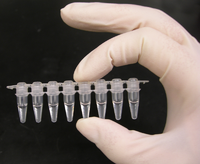
Photo from wikipedia
Purpose: In the neoadjuvant treatment (NAT) setting, dual HER2-targeted therapy is associated with increased pathologic complete response (pCR) rates compared with each therapy alone. Biomarkers allowing to predict treatment response… Click to show full abstract
Purpose: In the neoadjuvant treatment (NAT) setting, dual HER2-targeted therapy is associated with increased pathologic complete response (pCR) rates compared with each therapy alone. Biomarkers allowing to predict treatment response during NAT are needed. We aim to evaluate whether circulating tumor DNA (ctDNA) is associated with response to anti-HER2–targeted therapy. Experimental Design: Plasma DNA collected before NAT, at week 2, and before surgery from patients enrolled in the NeoALTTO trial was assessed using digital PCR for PIK3CA and TP53 mutation detection. Results: A total of 69 of 455 (15.2%) patients had a PIK3CA and/or TP53 mutation detected in the baseline tumor sample and evaluable ctDNA results from baseline samples. CtDNA was detected in 41%, 20%, and 5% patients before NAT, at week 2, and before surgery, respectively. ctDNA detection before NAT was significantly associated with older age and ER-negative status. ctDNA detection before NAT was associated with decreased odds of achieving pCR (OR = 0.15; 95% CI, 0.034–0.7; P = 0.0089), but not with event-free survival (EFS). Analyses for EFS were underpowered. Interestingly, the patients with HER2-enriched subtype tumors and undetectable ctDNA at baseline had the highest pCR rates. In contrast, patients with persistent ctDNA detection at baseline and week 2 had the lowest rate of pCR. Conclusions: ctDNA detection before neoadjuvant anti-HER2 therapies is associated with decreased pCR rates. Interestingly, patients with HER2-enriched tumors and undetectable ctDNA at baseline had the highest pCR rates, therefore appearing as the best candidates for treatment deescalation strategies.